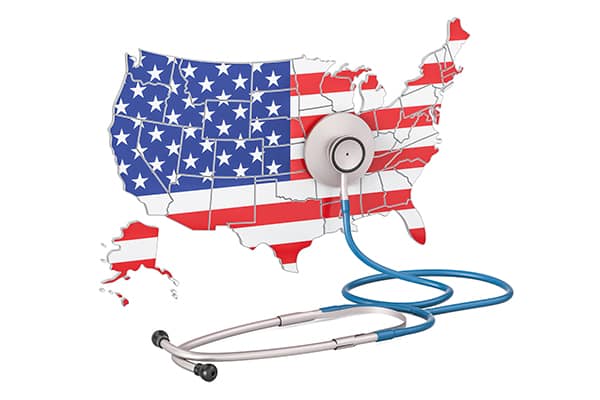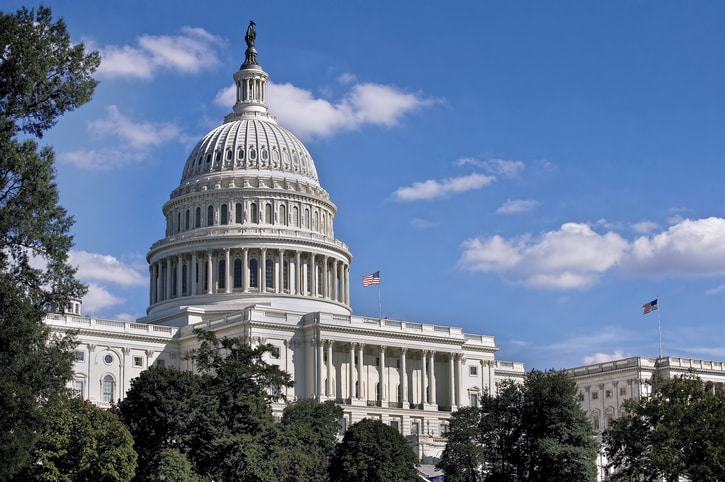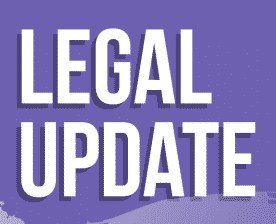Since his days on the campaign trial, President Trump has made clear that repeal and replacement of the Affordable Care Act (ACA) would be one of his main priorities. Congress has been working to achieve this goal, and both the Senate and the House of Representatives have recently released sweeping new healthcare bills.
On May 4, the House passed the American Health Care Act (AHCA) of 2017, and on June 22, the Senate unveiled the Better Care Reconciliation Act (BCRA). These two bills are largely similar—particularly as they pertain to employers—and both eliminate some of the key provisions of the ACA. The Senate has not yet voted to approve the BCRA. If it does pass, the Senate and House bills would need to be reconciled by a joint committee.
As employers stay tuned for the latest news on Congressional efforts to pass a federal healthcare law that replaces “Obamacare,” it is important to remember that the ACA is still valid law. Until further notice, employers must continue to comply with the ACA’s provisions, such as the employer shared responsibility provisions and the reporting requirements. However, employers should also be aware of the proposed changes under the AHCA and the BCRA, and how their responsibilities may change in the near future.

What are the key differences for employers between the new bills and the ACA?
- Both the AHCA and the BCRA would essentially eliminate the ACA’s employer mandate, which requires organizations with 50 or more full-time employees to offer minimum essential health insurance coverage—or pay a hefty penalty. Under the new bills, the penalty for failure to comply with the employer mandate would be reduced to zero.
- The new bills would allow states greater power over what health insurance plans in their domains are required to offer. For example, states could apply for waivers that would permit insurers to opt out of offering “essential health benefits,” which, under the ACA, included services like maternity care, addiction treatment, and mental health care. These waivers may make it more feasible for employers to offer employees insurance plans with fewer benefits but a lower cost. Waivers under the AHCA would also allow insurers to charge higher rates for people with pre-existing conditions. However, as with the ACA, both bills would prohibit insurers from denying coverage entirely on the basis of pre-existing conditions.
- Under the ACA, employer-sponsored health insurance plans that offer coverage above certain thresholds ($10,200 for individual coverage and $27,500 for family coverage) will be subject to a 40 percent excise tax beginning in 2020. This controversial “Cadillac tax” was designed to prevent the common practice of employers offering high-ranking employees better healthcare plans than most of the workforce receives. Both the AHCA and the BCRA would retain the Cadillac tax, but delay its implementation until 2026.
- Both new bills would significantly expand flexible spending accounts (FSAs) and health savings accounts (HSAs). Currently, the ACA caps contributions to FSAs at $2,500 per year, and account holders may not use their funds to reimburse expenses for over-the-counter drugs. The AHCA and the BCRA would remove this annual limit and allow over-the-counter reimbursement. For HSAs, the new bills would nearly double the current annual contribution limits of $3,400 for individuals and $6,750 for families. If either of these bills are enacted, employers should expect that more employees would take advantage of these types of accounts.
- The AHCA and the BCRA would eliminate the Small Business Health Care Tax Credit, which allows qualifying small businesses to buy healthcare coverage under the ACA through the Small Business Health Options Program (SHOP).
Which provisions of the ACA do the new bills retain?
- The AHCA and the BCRA retain the ACA’s 1094 and 1095 reporting requirements, under which applicable large employers (ALEs) must file forms with the IRS each year providing details on any health insurance coverage offered to employees. However, it is unclear what the effect of these reporting requirements would be if the employer mandate were eliminated.
- As with the ACA, dependents would be allowed to stay on their parents’ health plans until age 26.
- The ACA’s wellness incentive caps of 30 percent of individual coverage and 50 percent for nonsmokers have been popular among employers and would remain in place under the AHCA.
There are some significant differences between the AHCA and the BCRA that do not directly affect employers. For example, the BCRA includes deeper cuts to Medicaid than the AHCA, but provides more expansive subsidies for individuals purchasing their own insurance.
While Congress strives to reach an agreement on healthcare reform, employers must stay up to date on the latest changes while ensuring that they remain in compliance with the ACA. CBR can help your organization follow the requirements of the ACA in order to avoid penalties and prepare your workforce for the changes anticipated under the AHCA, BCRA, or future healthcare bills. Our team specializes in HR compliance, employee benefits administration, time and attendance tracking to help you monitor insurance eligibility, and more. Contact CBR today!
(Sources: benefitnews.com, shrm.org, cpapracticeadvisor.com, benefitnews.com, shrm.org)































Leave A Comment
You must be logged in to post a comment.